Tracing the exact origins of any flag from around the world can be difficult as many of them do not have concrete histories. Several of the oldest flags have histories that are based on legends, which may not be historically accurate.
Additionally, flags often undergo several changes and its rare for a country’s flag to look the same as it did when it was first used. Despite these challenges, we have compiled a list that best represents what are widely believed to be the world’s oldest flags.
Note that while many of the flags on this list have legendary origins, we chose not to use these dates as they have been widely disputed and lack concrete historical evidence to back up these claims. Otherwise, the order of the flags on this list would be much different.
10. Japan
Year First Used: c.16th century, possibly older
Year Formally Adopted: 1870
Official Name: Nisshōki of Hinomaru
Main Colors: White with red sun (disk)
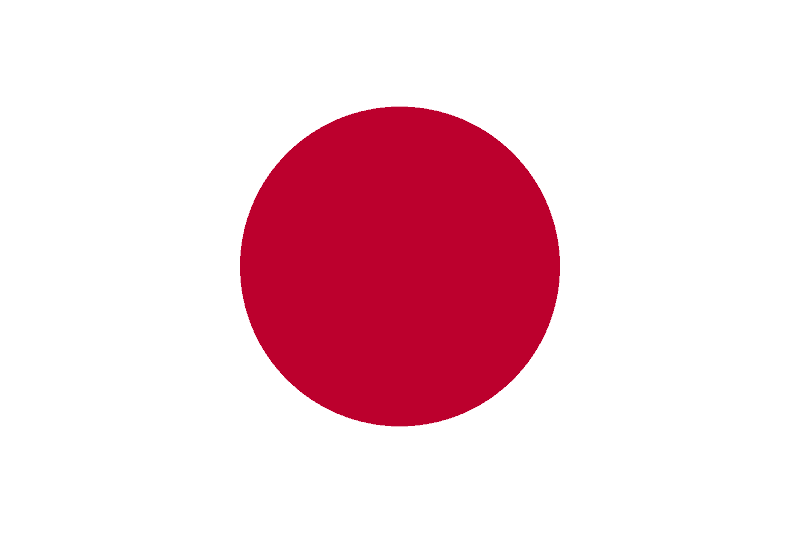
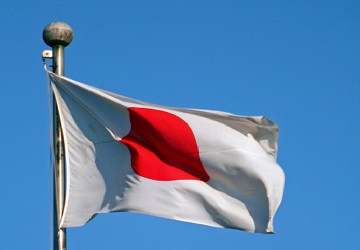
Like many of the oldest flags, the Japanese flag’s origin is shrouded in myths and legends. The Japanese consider 660 BCE to be the country’s founding date and they believe that the first Emperor of Japan was a descendant of the sun goddess Amaterasu. Due to this (legendary) history, the sun symbol has always been important in Japan, especially on the country’s flag.
The first recorded use of a sun-motif flag in Japan dates back to 701 — if this story is true, it would make Japan’s flag the oldest. However, this history is often disputed and outside of Japan the country’s flag is rarely considered the oldest in the world. The oldest existing Japanese flag only dates back to before the 16th century and again, comes with legendary history that places it from the 11th century.
Did You Know?
Of all the flags on this list, the flag of Japan is the most controversial and faces the most backlash when publicly displayed. This is due to the Rising Sun Ensign version of the Japanese flag, which was used by the Japanese Empire during World War II. The Japanese flag became seen as a symbol of ultra-nationalism and intimidation. These issues still persist today, leading to many protests and lawsuits.
9. Netherlands
Year First Used: c.1572
Year Formally Adopted: 1937
Official Name: Flag of the Kingdom of the Netherlands
Main Colors: Red, white, and blue triband
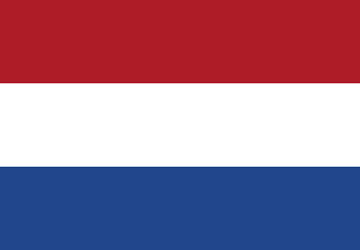

The modern Dutch flag (Netherlands) is a variation of the Prince’s Flag used by William Prince of Orange in the Dutch Revolt against King Philip II of Spain during the late 16th century. This tricolor flag was originally orange, white, and blue.
Eventually, the top orange strip was changed to red sometime after 1630. According to the CIA World Factbook, the color change may have been due to the orange dye fading to red over time. Additionally, the CIA Factbook considers the Dutch flag to be the oldest tricolor in continuous use. This claim is helped by the fact that most of the earliest flags only used two colors.
Did You Know?
While the official Dutch flag is a red, white, and blue triband, many people prefer the original orange, white, and blue flag and it is unofficially displayed in nationalists contexts, for example sporting events and the Olympics.
8. Sweden
Year First Used: c.1562, possibly earlier
Year Formally Adopted: 1906
Official Name: None
Main Colors: Blue with yellow Nordic cross
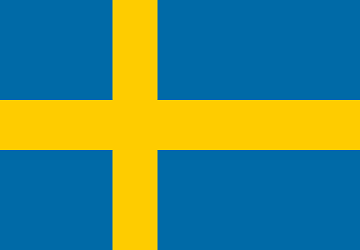
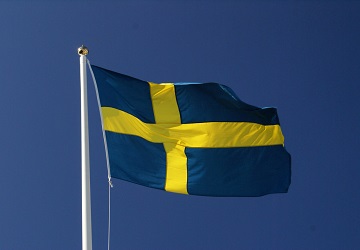
The history of the Swedish flag can be hard to trace as several different stories about its origin exist. Some theories suggest that the blue and yellow of the flag have been used by the Swedish royal court since at least 1275. Another story says that the flag’s colors were inspired by the present Swedish coat of arms from 1442.
A few of the oldest preserved Swedish flags show that the early flag’s colors may have actually been blue and white. In fact, the first legal description of the flag with a yellow cross on a blue background only dates to 1562.
Did You Know?
According to legend, the golden cross against a blue background was first used by King Eric IX, who supposedly saw a golden cross appear in the sky as he landed in Finland during the First Swedish Crusade in 1157.
7. Switzerland
Year First Used: c.1470, possibly earlier
Year Formally Adopted: 1889
Official Name: None
Main Colors: Red with white cross
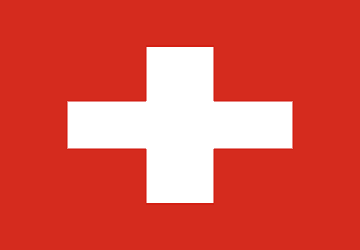
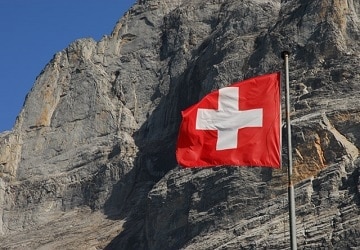
The flag of Switzerland is one of only two square sovereign-state flags in the world, the other belongs to Vatican City. Although officially the flag is square, Swiss ships, boats, and non-government bodies often fly a rectangular version of the Swiss flag.
The Swiss flag’s history can be traced back to three different legends: the Theban Legion, the Reichssturmfahne (Imperial War Banner) during the 12th century, and the Arma Christi in the 13th century. While all of these groups may have used a red flag with white cross, the square flag was first used sometime in the 1470s.
Did You Know?
The Red Cross symbol (a red cross on a white background) is a direct inverse of the Swiss flag. This symbol became the original protection symbol declared by the first Geneva convention and pays tribute to the founder of the Red Cross, the Swiss Henry Dunant.
6. Albania
Year First Used: c.1443, possibly earlier
Year Formally Adopted: 1912
Official Name: Flamuri Kombëtar
Main Colors: Red with a black double-headed eagle
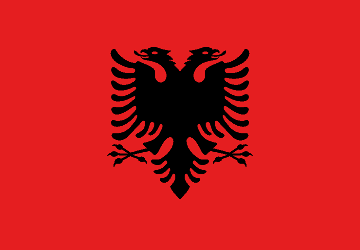
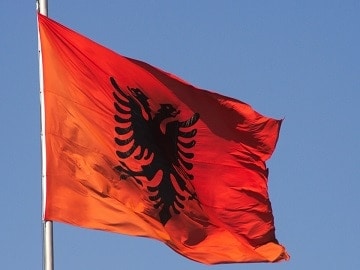
The imagery of a black double-headed eagle on a red background was used by noble families of Albania as far back as the Middle Ages. These families borrowed the double-headed eagle from the banner of the Byzantine Empire.
The design of Albania’s modern flag is directly traced back to the House of Kastrioti’s coat of arms. Gjergj Kastriot Skanderbeg used a red flag with a black double-headed eagle when he led a revolt against the Ottoman Empire resulting in Albania’s independence.
Since then, the symbol of the double-headed eagle has been re-used by Albanian nationalists each time the country has fought for its independence. The flag was formally adopted in 1912.
Did You Know?
During the 1990s, the Albanian flag was used as a symbol of the unofficial Republic of Kosova, a self-declared proto-state in Kosovo.
5. Royal Standard of Norway
Year First Used: c.1318 (possibly earlier around 1280)
Year Formally Adopted: 1905
Official Name: Kongeflagget
Main Colors: Red background with crowned golden lion holding an axe
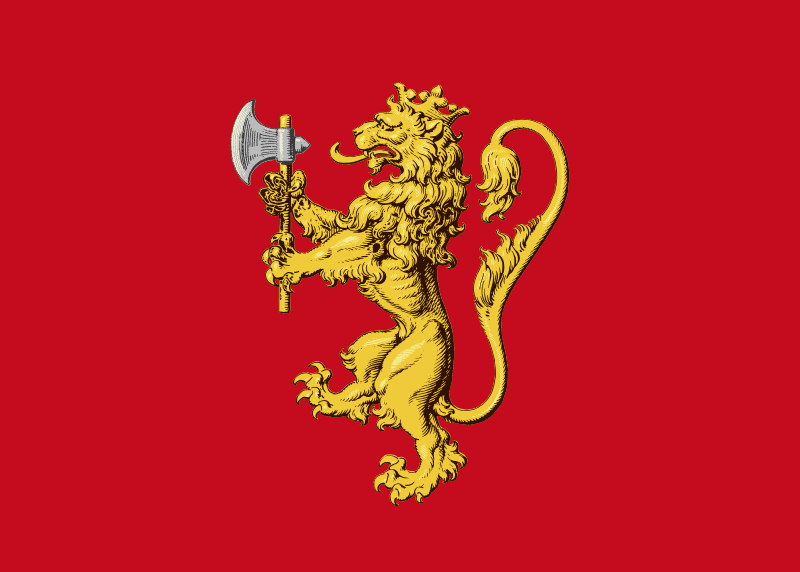
While the current national flag of Norway has only been in use since 1821, the Royal Standard of Norway definitively dates back to around 1318 when it was used on the seal of Duchess Ingebjørg. The flag may even go back further as Erik Magnusson is said to have flown a flag in 1280 that depicted a golden lion with a crown and axe on a red background.
Originally, the Royal Standard was only used by the King of Norway, but for a time it was used to represent the country. However in starting in the 17th century until 1814, Norway used the same flag as Denmark as both countries were unified during this time. The Royal Standard was re-introduced in 1905 following the dissolution of the union between Sweden and Norway and once again is only used by the King of Norway.
Did You Know?
After Norway became its own kingdom again in 1905, the Royal Standard of Norway made its first appearance in several centuries on November 25th when King Haakon VII arrived in the capital.
4. Scotland
Year First Used: c. 13th or 14th century (according to legend 832 CE)
Year Formally Adopted: c. 15th century
Official Name: St Andrew’s Cross or Saltire
Main Colors: Blue field with white diagonal cross
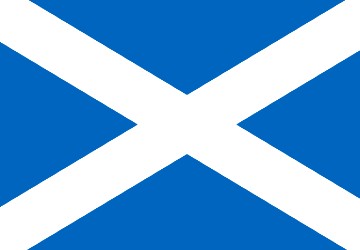
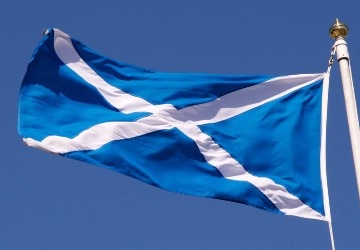
Based on this legend, many people see 832 CE as the official date that the Scottish adopted the Saltire. However, there is no real evidence or historic records that show St Andrew’s cross was used as any sort of emblem during this time period.
The earliest known use of St Andrew as a national emblem only dates back to around 1286. Additionally, St Andrew’s cross first began appearing on flags sometime in the late 14th century. Regardless of when St Andrew’s cross was actually first used, the Scottish flag is one of the oldest flags in the world.
Did You Know?
The first definitive depiction of the Saltire as it is known today dates back to 1542 in the armorial of Sir David Lindsay.
3. Latvia
Year First Used: c.1279
Year Formally Adopted: 1918; re-adopted in 1990
Official Name: None
Main Colors: Red with thin white band
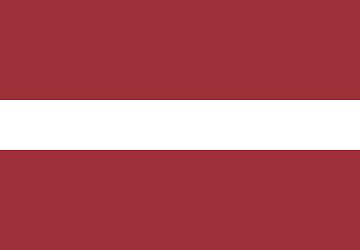
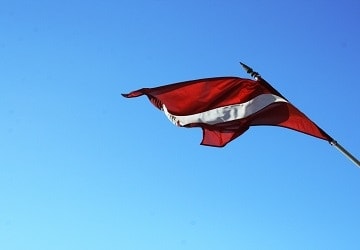
The Latvian flag looks similar to many of the world’s oldest flags, which also have a red and white color scheme. While no one knows for sure when the red and white flag was first used in Latvia, there is historical evidence that shows the flag could have been used as early as the 13th century. A red flag with a white stripe was first mentioned in the Rhymed Chronicle of Livonia — the flag was used in 1279 during a battle between ancient Latvian tribes from Cēsis.
The red and white flag was formally adopted in 1918 and was used until Soviet occupation of Latvia began in 1940. The flag of independent Latvia was finally restored in 1990.
Did You Know?
According to legend, the red of the Lativian flag represents the blood of a Latvian chief who was wounded in battle and wrapped in a white sheet. The white part depicts where the chief was laying while the two edges were stained with his blood.
2. Austria
Year First Used: c. late 12th century but fist officially documented in 1230
Year Formally Adopted: 1918
Official Name: None
Main Colors: Red and white triband
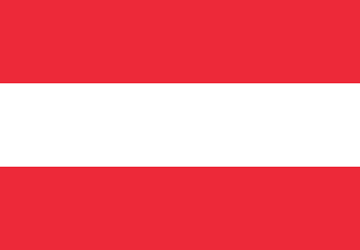
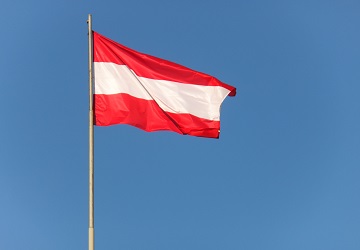
The flag of Austria is often one of the top contenders for world’s oldest flag. The red and white triband may have been used as early as 1105 and is based on the coat of arms of the medieval Babenberg dynasty. Although this predates the Danish flag by a century, the first documented official use of the triband did not occur until 1230.
According to Austrian legend, the country’s flag was invented by Duke Leopold V of Austria as a consequence of his fighting during the Siege of Acre (1189 – 1191). While this story is probably not true, the rulers of Austria have been using red-white-red triband colors since the late 13th century.
Did You Know?
From around 1700 – 1918, the flag of Austria was black and gold, modeled after the colors of banner of the Holy Roman Empire. The use of the black and gold colors started because, Holy Roman Emperor Francis II of the Habsburg dynasty declared his personal domain to be the Austrian Empire.
1. Denmark
Year First Used: c.1219, possibly earlier
Year Formally Adopted: 1625
Official Name: Dannebrog
Main Colors: Red with white Nordic cross
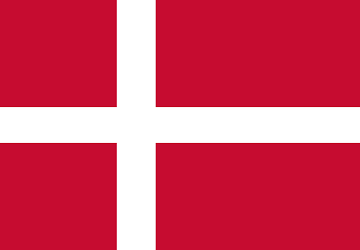
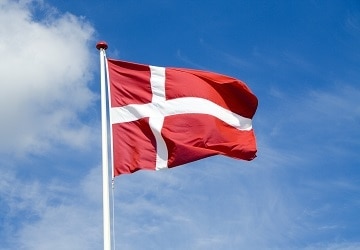
According to legend, the flag fell from heaven during a battle in Lyndanisse, Estonia. While the legend may have appeared around 1500, there is evidence that a red flag with a white cross was being used by the Danish since around 1340 – 1370. The Dannebrog is shown in a Gelre Armorial from around this time alongside the coat of arms of the King of Denmark.
Did You Know?
Despite being a popular flag, the Dannebrog was banned from private use in 1834. However, many people disobeyed the law and still openly displayed the flag and the ban was officially lifted in 1854.
OTHER POSTS YOU MAY BE INTERESTED IN












Just forgetting the Scottish saltire in use from the 800’s?